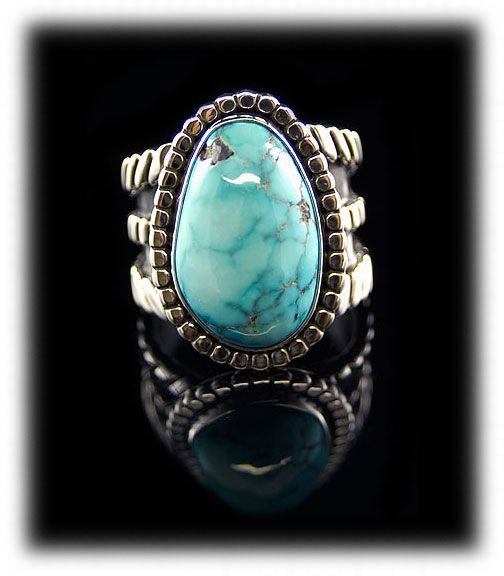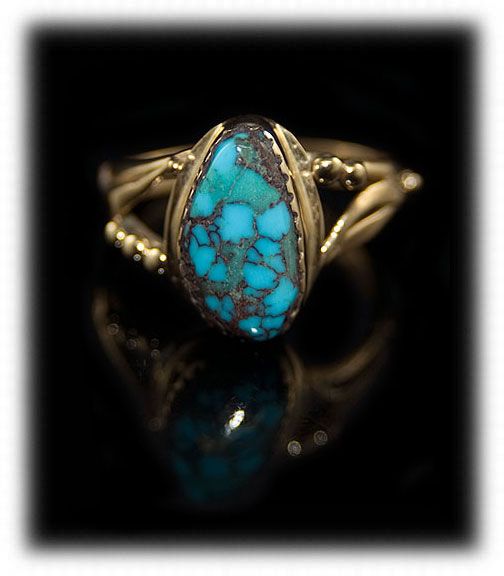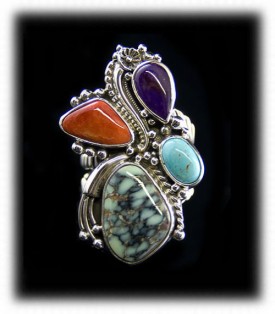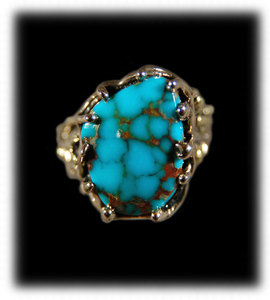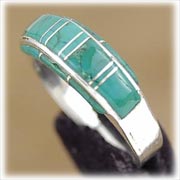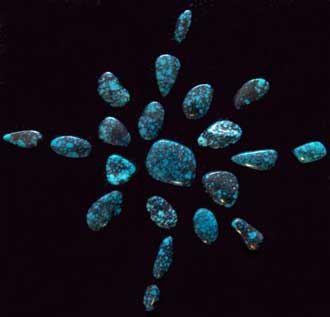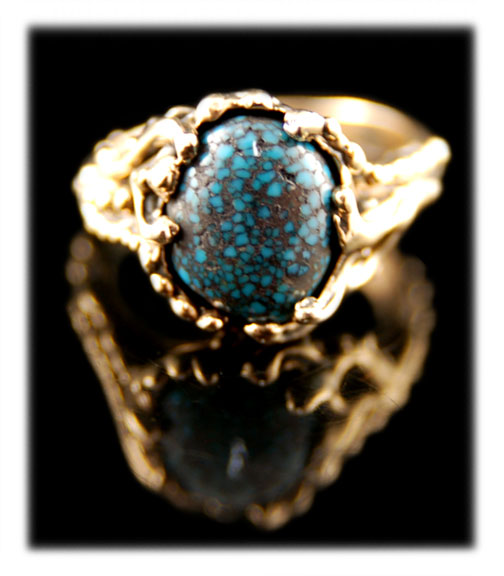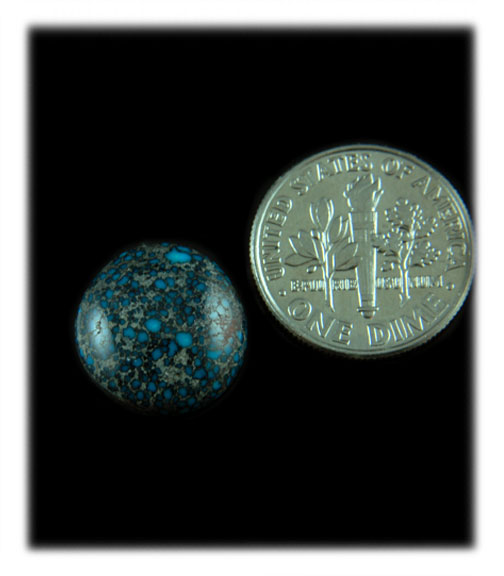Turquoise Information from Durango Silver Company
Basic Turquoise Information
Here is some quick
Turquoise Facts. One of the most important pieces of
Turquoise Information is that this gem is one of the most popular gemstones in the world market and is considered by most jewelers and gem experts to be in the top ten most popular gems world wide.
Turquoise is a gemstone with great diversity as jewelers add it to necklaces, bracelets, rings, and earrings. The stone is also a popular material for art pieces, trade, and religion. Another benefit to a Turquoise purchase is that the stone’s color allows jewelers to use a variety of materials for the settings. For instance, the stone pairs well with yellow gold, white gold, and platinum along with stainless steel and silver. Sterling Silver is the most popular medium you will find the "sky stone" set in. Turquoise is the birthstone for December and recommended for a couple’s fifth wedding anniversary. With the gem in high demand, buyers must carefully assess a stone for quality. When shopping for Turquoise, review each stone’s signature color and surrounding matrix if you are looking for a collectible, or you are paying extra for the gem. Standard Turquoise ranges from 2.00 per carat to 15.00 per carat for natural gems that have not been stabilized or color enhanced. Stabilized Turquoise gemstones will sell for 25 cents to 5 dollars per carat depending on color and matrix patterning. Turquoise will vary in color from deep green to light blue while the surrounding hues may feature white or black. There are also rare colors of Turquoise such as lime green Turquoise, yellow, and brown Turquoise. Some gems may not feature varying colors within the stone. There are also many cousins in the phosphate gemstone family such as Variscite, Chalcociderite, and Faustite that are commonly sold as Turquoise and have been for thousands of years. Keep in mind that surrounding color does not cause the value of the gem to decrease. Therefore, individuals should decide whether they like more or less color variation in their Turquoise Jewelry or stones, whether they like "Matrix" or host rock in the gem or not, and if they desire a standard grade of Turquoise, a rare hue, or an ultra rare variety of Turquoise such as Spiderweb Turquoise or Turquoise from a rare local or closed mine. - Find More
Turquoise Information at our
Turquoise Learning Center
Turquoise Information - Buying Tips
When shopping for turquoise, be sure to review the stone’s color for vividness
and uniformity. After a company procures turquoise, they typically treat the
gem to enhance the stone’s attributes. In some cases, treatment will include
dye, which will change a pale-colored stone into one with bright colors. Low
quality gems usually receive a dye treatment, and since turquoise is porous,
it will accept chemically based color additives. If gem shoppers notice that
a stone appears translucent, then it may be color treated and is a low quality
gem. If a buyer purchases a dyed stone, then he or she should ensure proper
care to prevent the turquoise from fading or discoloring. Global turquoise reserves
appear to be decreasing while the demand for the gem is growing. Therefore,
purchasing a piece of jewelry with a quality stone may be a smart financial
investment.
Turquoise Information - Cuts
Turquoise is not transparent. Therefore, jewelry cutters typically do not facet
the stone. Instead, artisans cut
Turquoise
cabochons or
Turquoise beads. In fact,
the cabochon cut is the oldest and most basic way that jewelers cut gems. Buyers
will also find Turquoise in carved shapes like pear, flower,heart, and more
intricate shapes.
Turquoise Information - How to Care for Turquoise
Since turquoise is a phosphate mineral, it is fragile. Therefore, gemstone owners
should use caution when wearing perfume on their neck and wrists while adorning
themselves with a turquoise bracelet or necklace. Chemicals will damage the
stone’s finish and may change its color. Skin oils may also negatively
affect turquoise. Avoid cleaning the gem with commercial jewelry cleaning products
and prevent the stone from entering direct sunlight because it can cause turquoise
to discolor. Before putting on a jewelry item featuring turquoise, apply makeup
and sunscreen in addition to hairspray. After wearing turquoise, gently wipe
the stone with a soft, clean towel, which will prevent residue from developing.
It is safe to wash the gem with warm water. However, be sure to dry it thoroughly
before placing it inside a storage container. Store turquoise in a separate
compartment away from other jewelry pieces or gems as turquoise may become scratched.
Also, do not store the gemstone in an airtight container since this can also
cause damage to the stone.
We hope you have learned some great new
Turquoise Information - for more please visit our
Turquoise Infomation page on
www.duragosilver.com
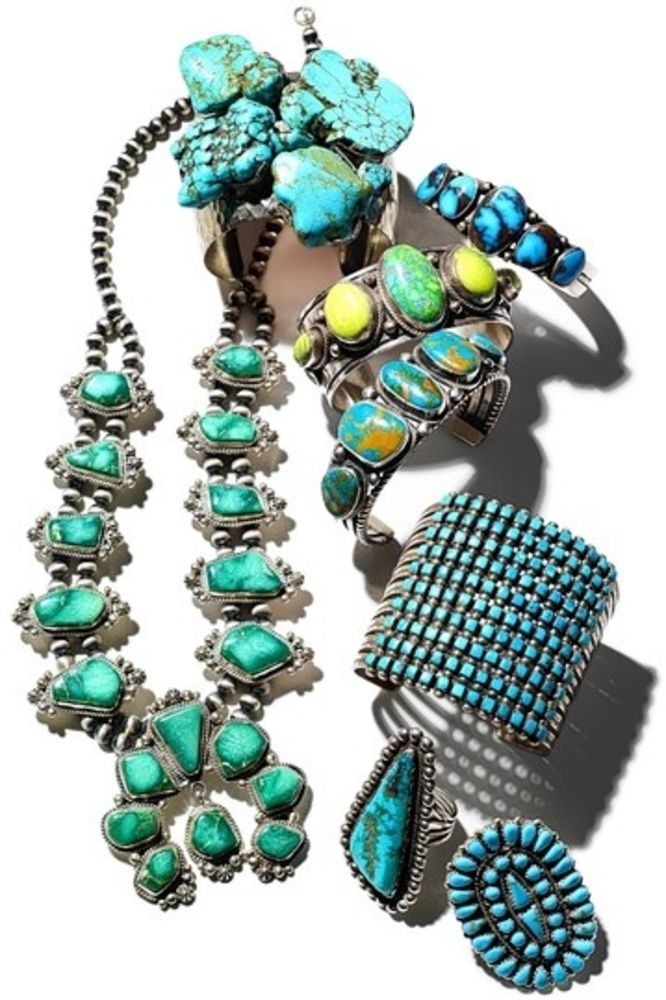 Turquoise is a classic gemstone that will add interest to any
Turquoise is a classic gemstone that will add interest to any 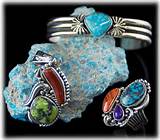 When you follow the links on this website you will learn the
When you follow the links on this website you will learn the 


